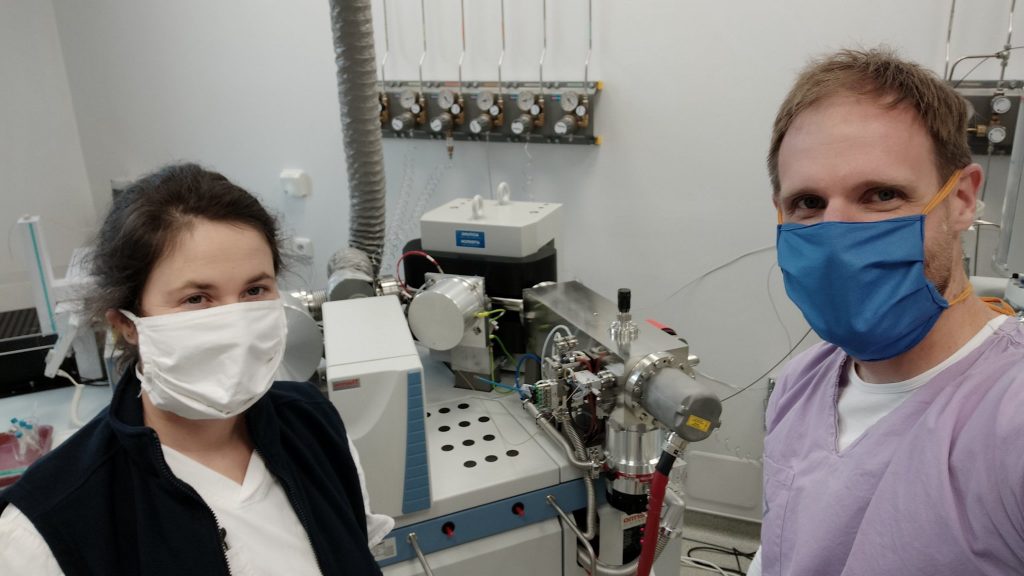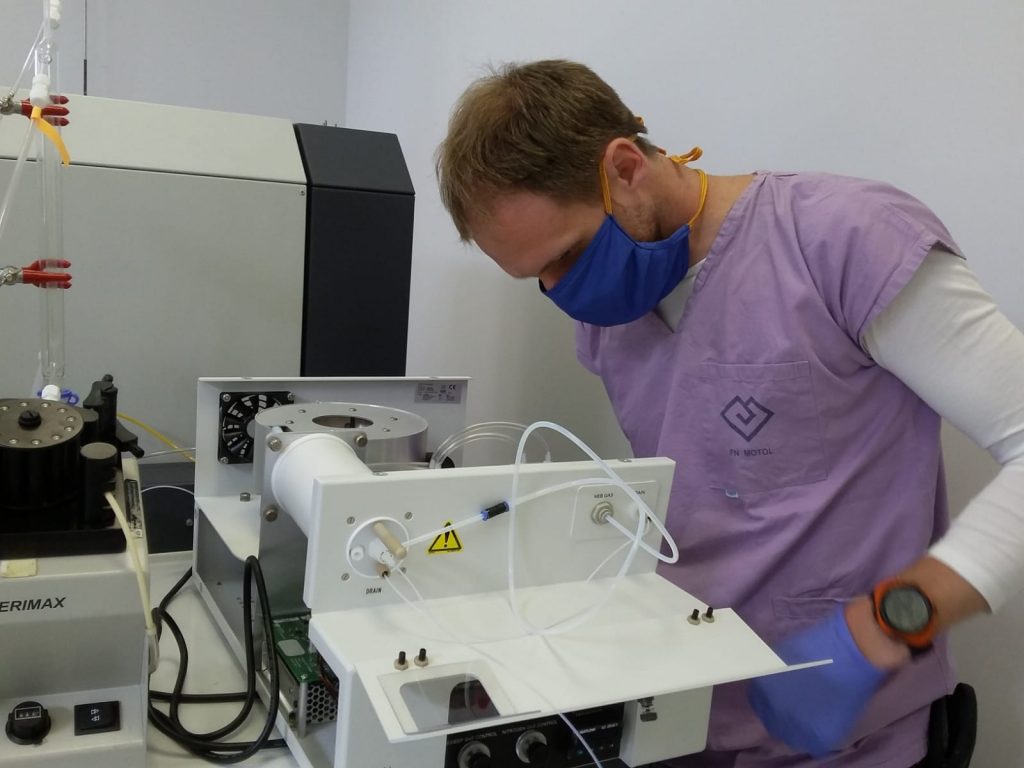 A new book entitled Metallurgical Slags: Environmental Geochemistry and Resource Potential edited by Nadine M. Piatak (USGS) and Vojtěch Ettler has been published by the prestigious publishing house, the Royal Society of Chemistry (link). Vojtech Ettler (co-) authored four of nine chapters in the book: Introduction: Metallurgical Slags – Environmental Liability or Valuable Resource? (DOI), Geochemistry and Mineralogy of Slags (DOI), Slag Leaching Properties and Release of Contaminants (DOI), and Environmental Impact of Slag Particulates (DOI).
A new book entitled Metallurgical Slags: Environmental Geochemistry and Resource Potential edited by Nadine M. Piatak (USGS) and Vojtěch Ettler has been published by the prestigious publishing house, the Royal Society of Chemistry (link). Vojtech Ettler (co-) authored four of nine chapters in the book: Introduction: Metallurgical Slags – Environmental Liability or Valuable Resource? (DOI), Geochemistry and Mineralogy of Slags (DOI), Slag Leaching Properties and Release of Contaminants (DOI), and Environmental Impact of Slag Particulates (DOI).
Author Archives: ettlerv
Metal(loid)s remobilization from contaminated soils during experimental wildfires
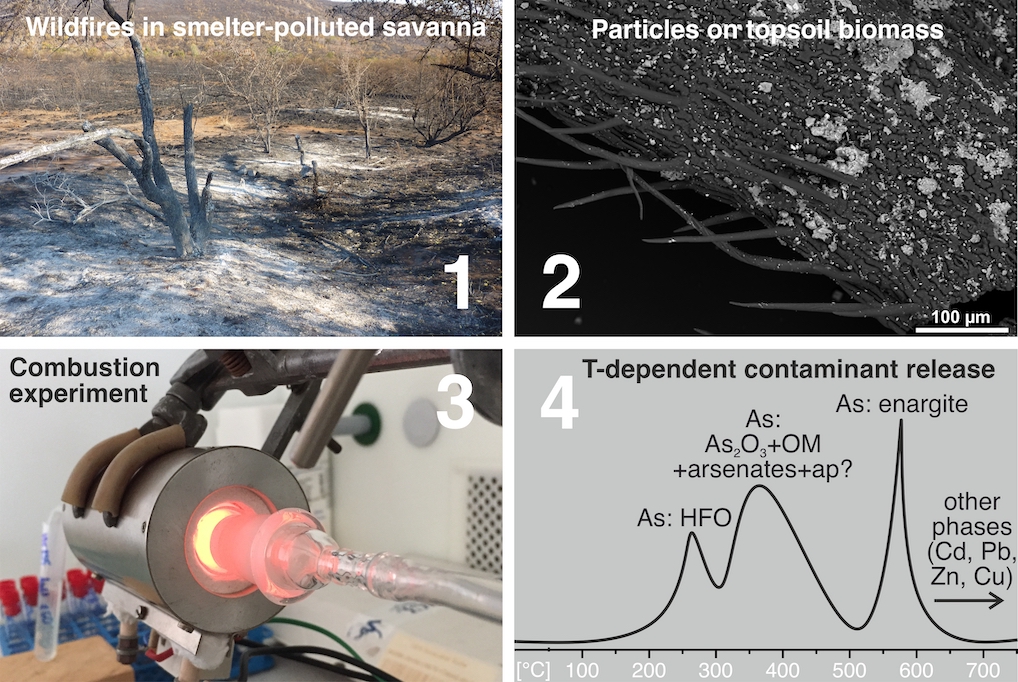 The temperature-dependent releases of metal(loid)s (As, Cd, Cu, Pb, Zn) from biomass-rich savanna soils collected near a Cu smelter in Namibia have been studied under simulated wildfire conditions. For this purpose, new wildfire-simulating setups were introduced. Laboratory single-step combustion experiments (250–850 °C) and experiments with a continuous temperature increase and online ICP-OES detection (25–750 °C) were coupled with mineralogical investigations of the soils, ashes, and aerosols. The results indicate that metals are dominantly concentrating in the ash residue, and part of As is remobilized depending on temperature. Therefore, the active and abandoned mining and smelting sites, especially those highly enriched in As, should be protected against wildfires, which can be responsible for substantial As re-emissions.
The temperature-dependent releases of metal(loid)s (As, Cd, Cu, Pb, Zn) from biomass-rich savanna soils collected near a Cu smelter in Namibia have been studied under simulated wildfire conditions. For this purpose, new wildfire-simulating setups were introduced. Laboratory single-step combustion experiments (250–850 °C) and experiments with a continuous temperature increase and online ICP-OES detection (25–750 °C) were coupled with mineralogical investigations of the soils, ashes, and aerosols. The results indicate that metals are dominantly concentrating in the ash residue, and part of As is remobilized depending on temperature. Therefore, the active and abandoned mining and smelting sites, especially those highly enriched in As, should be protected against wildfires, which can be responsible for substantial As re-emissions.
Tuhý M., Ettler V., Rohovec J., Matoušková Š., Mihaljevič M., Kříbek B., Mapani B. (2021): Metal(loid)s remobilization and mineralogical transformations in smelter-polluted savanna soils under simulated wildfire conditions. Journal of Environmental Management 293, 112899. (DOI)
Lead isotopic compositions in La Tène artifacts
 The paper presents a geochemical analysis of a remarkable assemblage from the early La Tène period (4th century BCE): the Duchcov hoard found in the late 19th century in north-western Bohemia. More than a thousand pieces of bronze jewellery in a bronze cauldron were deposited in a natural spring. This possibly ritual offering of unknown purpose might have involved a large community whose origin and structure could be discussed using archaeometric data from the hoard. This assemblage offers a unique opportunity to study Iron Age bronze metalworking. The results show that this seemingly homogeneous assemblage contains several chemically distinctive groups that are compatible with the spread of the so-called Duchcov-Münsingen horizon in the 4th century BCE.
The paper presents a geochemical analysis of a remarkable assemblage from the early La Tène period (4th century BCE): the Duchcov hoard found in the late 19th century in north-western Bohemia. More than a thousand pieces of bronze jewellery in a bronze cauldron were deposited in a natural spring. This possibly ritual offering of unknown purpose might have involved a large community whose origin and structure could be discussed using archaeometric data from the hoard. This assemblage offers a unique opportunity to study Iron Age bronze metalworking. The results show that this seemingly homogeneous assemblage contains several chemically distinctive groups that are compatible with the spread of the so-called Duchcov-Münsingen horizon in the 4th century BCE.
Danielisová A., Pajdla P., Bursák D., Strnad L., Trubač J., Kmošek J. (2021): Claiming the land or protecting the goods? The Duchcov hoard in Bohemia as a proxy for ‘Celtic migrations’ in Europe in the 4th century BCE. Journal of Archaeological Science 127, 105314. (DOI)
Looking at a Pb–Zn mining/smelting site in Kabwe (Zambia) using tree rings
 We used pine tree rings and soil geochemistry to expose the activity of a Pb-Zn smelter in Kabwe, Zambia. We found that local soils are extremely contaminated (up to 16000 mg/kg Pb; 14000 mg/kg Zn; 600 mg/kg Cu in the topsoil). Also, metal bearing particles share their Pb isotopic signature with smelting by-products, and more concerning, metals in tree biomass. We concluded that these metals enter the tree though the bark and leaves, not the roots, implying airborne contamination. Using Pb and C isotopes we mapped the dendrochronology of the tree and verified its susceptibility to changes in smelter production throughout the late 20th century.
We used pine tree rings and soil geochemistry to expose the activity of a Pb-Zn smelter in Kabwe, Zambia. We found that local soils are extremely contaminated (up to 16000 mg/kg Pb; 14000 mg/kg Zn; 600 mg/kg Cu in the topsoil). Also, metal bearing particles share their Pb isotopic signature with smelting by-products, and more concerning, metals in tree biomass. We concluded that these metals enter the tree though the bark and leaves, not the roots, implying airborne contamination. Using Pb and C isotopes we mapped the dendrochronology of the tree and verified its susceptibility to changes in smelter production throughout the late 20th century.
Baieta R., Mihaljevič M., Ettler V., Vaněk A., Penížek V., Trubač J., Kříbek B., Ježek J., Svoboda M., Sracek O., Nyambe I. (2021): Depicting the historical pollution in a Pb–Zn mining/smelting site in Kabwe (Zambia) using tree rings. Journal of African Earth Sciences 181, 104246. (DOI)
Plenary talk at the 7th Slag Valorization Symposium
 Vojtěch Ettler will give a plenary lecture entitled “The leaching behavior of smelting slags: from contaminants to critical metals” on the 7th International Slag Valorization Symposium (SVS7). The conference, originally planned to take place in Leuven, Belgium, will finally run in a virtual mode. SVS7 is a major event on characterization and applications of metallurgical slags and will bring together people from R&D sector and industry.
Vojtěch Ettler will give a plenary lecture entitled “The leaching behavior of smelting slags: from contaminants to critical metals” on the 7th International Slag Valorization Symposium (SVS7). The conference, originally planned to take place in Leuven, Belgium, will finally run in a virtual mode. SVS7 is a major event on characterization and applications of metallurgical slags and will bring together people from R&D sector and industry.
Mobility of As in sulfidic gley soils during drought
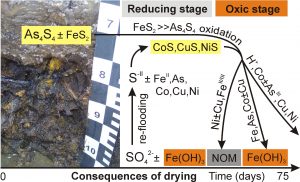 We combined selective chemical extractions and S isotopes to examine the mobility of As and trace metals (Co, Cu, Ni) in two Czech wetland soils enriched in authigenic Fe-As sulfide minerals through the drying process. We found that As and trace metals released via oxidation of the sulfide phases (particularly Fe sulfides) were almost entirely sequestered by Fe(III) (oxyhydr)oxides, but concomitant acidification resulted in the pH-dependent release of the As(III) and trace metals. Although our results documented the relatively low As mobilization potential under relatively short droughts (several weeks), the preservation of the anoxic conditions must be regarded as a fundamental management strategy of these and other sulfidic wetlands enriched in As.
We combined selective chemical extractions and S isotopes to examine the mobility of As and trace metals (Co, Cu, Ni) in two Czech wetland soils enriched in authigenic Fe-As sulfide minerals through the drying process. We found that As and trace metals released via oxidation of the sulfide phases (particularly Fe sulfides) were almost entirely sequestered by Fe(III) (oxyhydr)oxides, but concomitant acidification resulted in the pH-dependent release of the As(III) and trace metals. Although our results documented the relatively low As mobilization potential under relatively short droughts (several weeks), the preservation of the anoxic conditions must be regarded as a fundamental management strategy of these and other sulfidic wetlands enriched in As.
Drahota P., Peřestá M., Trubač J., Mihaljevič M., Vaněk A. (2021): Arsenic fractionation and mobility in sulfidic wetland soils during experimental drying. Chemosphere 277, 130306. (DOI)
Marek Tuhý spoke about diamonds in the Czech TV channel for kids

Marek Tuhý, our PhD student, spoke about diamonds in the Czech TV channel for kids (CT D:-)) in a TV show called “Wifina”. This part of the broadcast was published on March 31, 2021 and is available in the Czech TV online archive (link).
African Pb-Zn slags: a potential source of vanadium?
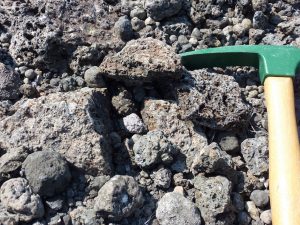 Vanadium is a key critical metal with many applications in the steel and chemical industry. Slags issued from the metallurgical processing of Pb-Zn vanadate ores at Berg Aukas (Namibia) and Kabwe (Zambia) exhibit interestingly high concentrations of V (up to 6140 ppm) and can be considered potential sources of this metal. Two papers published recently by our research group focused on geochemistry and mineralogy of these slags combined with laboratory simulation of the hydrometallurgical extractive processes in view of potential V recovery. The results indicate that, despite high V bulk concentrations and extractabilities, its recovery seems to be non-economical, mainly due to low prices of V (and other associated valuable elements such as Zn) on the global market.
Vanadium is a key critical metal with many applications in the steel and chemical industry. Slags issued from the metallurgical processing of Pb-Zn vanadate ores at Berg Aukas (Namibia) and Kabwe (Zambia) exhibit interestingly high concentrations of V (up to 6140 ppm) and can be considered potential sources of this metal. Two papers published recently by our research group focused on geochemistry and mineralogy of these slags combined with laboratory simulation of the hydrometallurgical extractive processes in view of potential V recovery. The results indicate that, despite high V bulk concentrations and extractabilities, its recovery seems to be non-economical, mainly due to low prices of V (and other associated valuable elements such as Zn) on the global market.
Ettler V., Mihaljevič M., Jarošíková A., Culka A., Kříbek B., Majer V., Vaněk A., Penížek V., Sracek O., Mapani B., Kamona F. (2020): Vanadium-rich slags from the historical processing of Zn-Pb-V ores at Berg Aukas (Namibia): Mineralogy and environmental stability. Applied Geochemistry 114, 104473. (DOI)
Ettler V., Jarošíková A., Mihaljevič M., Kříbek B., Nyambe I., Kamona F., Mapani B. (2020): Vanadium in slags from smelting of African Pb-Zn vanadate ores: Mineralogy, extractability and potential recovery. Journal of Geochemical Exploration 218, 106631. (DOI)
AutoSEM techniques applied to contaminated soils
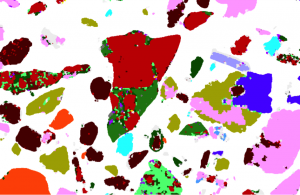
Automated mineralogy has been used to quantitatively determine the contaminant partitioning in the soil particulates originating from heavily polluted mining/smelting sites. This method provides faster data acquisition, the full integration of the quantitative EDS data and better detection limits for the elements of interest. AutoSEM was found to be a useful tool for the determination of the modal phase distribution and element partitioning in the metal(loid)-bearing (As, Cu, Pb, Zn) soil particulates and will definitely find more applications in environmental soil sciences in the future.
Tuhý M., Hrstka T., Ettler V., Automated mineralogy for quantification and partitioning of metal(loid)s in particulates from mining/smelting-polluted soils. Environmental Pollution 266: 115118. (DOI) (open-access)
Measurements are going on!
Despite the coronavirus outbreak and COVID-19 pandemia, measurements in our isotope lab are still going on. Stay in a good health!
